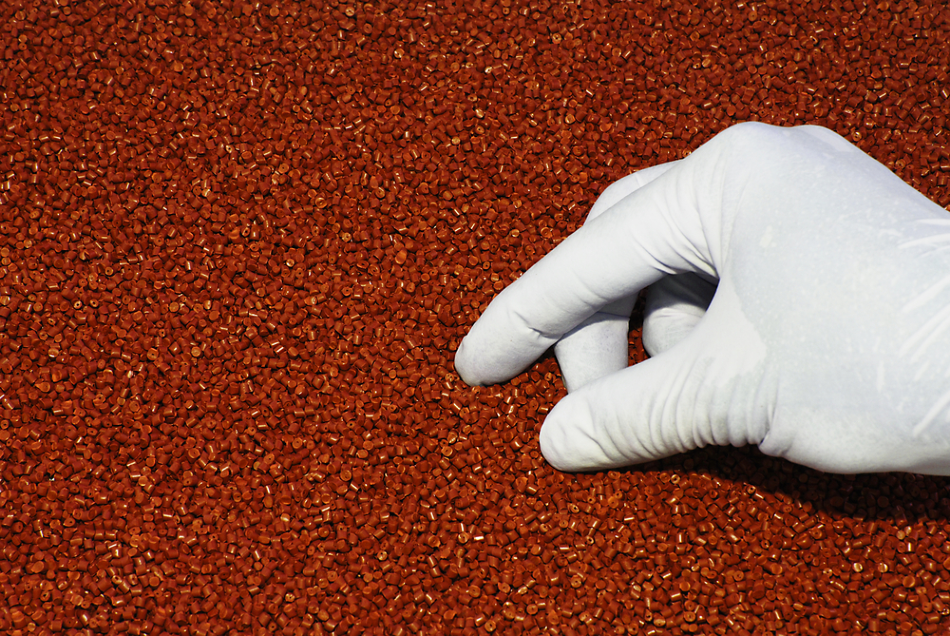
Image Credit: XXL Photo/Shutterstock.com
Robots are playing ever more important roles in modern society, becoming a ubiquitous, widely used technology in a growing number of industries due to their efficiency and suitability for a wide variety of tasks. One area that can benefit from the development of robotics is the analysis of polymers.
The Importance of Polymer Analysis and the Challenges Facing the Industry
Polymers are a commonly used component in advanced materials and are found in almost every material in modern society. They are formed from long strings of monomers which are bound together by covalent bonds to create useful macromolecules and are found in clothing, building materials, fiberglass, plastic bags, paints, everyday objects such as Teflon-coated cookware, as well as in medical applications such as synthetic heart valves.
The ubiquitous nature of natural and synthetic polymers demands that quality control and knowledge of the chemical and atomic structure of these materials is of paramount importance. By utilizing efficient analytical techniques to find impurities and characterize polymer formations, new and higher quality polymers can be produced for a variety of real-world applications. By analyzing the chemical composition of polymers, clues to their physical properties such as viscosity, strength, and density can be elucidated.
Many different scientific techniques can be applied to the question of more efficient and better polymer analysis and characterization including IR and Raman spectroscopy, microscopic techniques and chromatography. However, without the benefits that automation brings, there are limitations to how efficient and cost-effective this process can be. This is where the science of robotics can play an important role.
How Robots can be Used to Improve Polymer Analysis
Over the past few decades, robots have played an increasing role within the modern laboratory. Due to advances in microelectronics, micromechanics, and microcomputer science, this field has made significant advances, making possible more streamlined, efficient laboratory environments that are highly collaborative and dynamic.
For one, they can free up researchers to carry out more observational roles by taking out the repetitiveness of certain tasks, which robots are well suited for. In doing so, they can also increase the acquisition rates of pertinent datasets, which increases the efficiency of a research project.
By taking the human element out of certain aspects of a research project and increasing the efficiency of the project overall, cost-saving benefits can also be achieved, which is especially useful for projects which may have tight budgets.
Gel permeation chromatography (GPC) is a technique that is utilized widely for polymer analysis and characterization. The technique provides important information including molecular weight distribution, a relevant factor in polymer analysis. However, like many techniques, running studies can be costly and time-consuming. In a report published online in 1998, researchers explored the role of robotics in this scientific technique.
One of the main issues that GPC studies face pertains to manual preparation of polymer samples. A redundant and time-consuming process, it also exposes analysts to hot surfaces, chemicals, and solvent vapors, which raises health and safety concerns. By using a robotic system based on a Zymark laboratory robotic system, all the steps, including the hot steps, were able to be carried out in a safe, efficient manner. The researchers demonstrated that the automated procedure was both reliable and able to be reproduced. By taking out the human element from this aspect of GPC studies, the process was improved exponentially.
Robotic platforms have also been developed in recent years for techniques such as spectroscopy, melt flow index testing, and other analytical methods that are used for commercial polymer analysis. The MI-Robo 89.16 is an example of a robotic analysis system for melt flow index testing studies that is commercially available wherein the process is fully automated from loading to measurement.
The Future of Polymer Analysis
The field of robotics has been assisting in polymer analysis studies for the past couple of decades. However, just utilizing this technological advance for applications such as automated sample loading only represents part of the potential use of the field. Recent advances in neural networking and deep learning are currently of interest to researchers in the area and will no doubt present the next step in the use of robotics in polymer analysis in the coming years.
Sources and Further Reading
Disclaimer: The views expressed here are those of the author expressed in their private capacity and do not necessarily represent the views of AZoM.com Limited T/A AZoNetwork the owner and operator of this website. This disclaimer forms part of the Terms and conditions of use of this website.